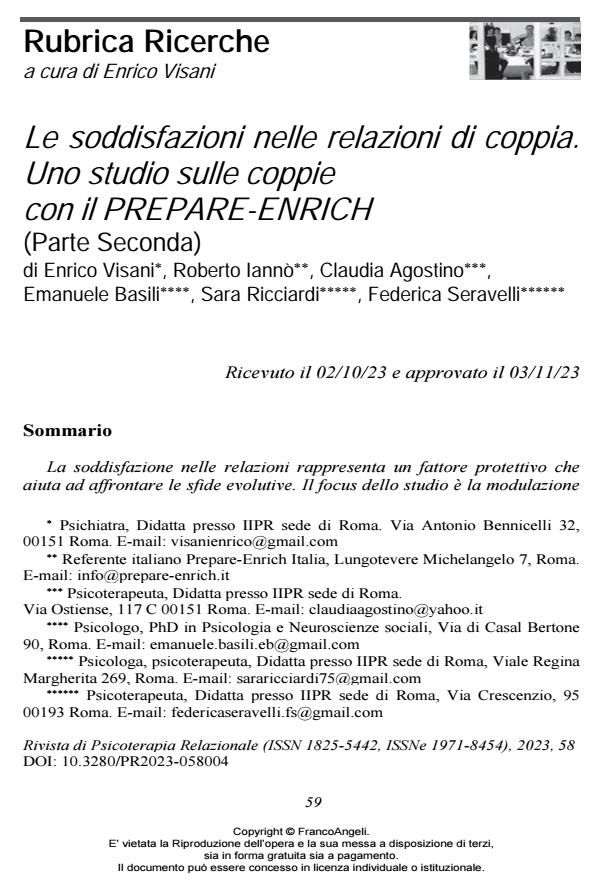Satisfaction in the couple’s relationship. A study with PREPARE-ENRICH (Part Two)
Journal title RIVISTA DI PSICOTERAPIA RELAZIONALE
Author/s Enrico Visani, Roberto Iannò, Claudia Agostino, Emanuele Basili, Sara Ricciardi, Federica Seravelli
Publishing Year 2024 Issue 2023/58
Language Italian Pages 20 P. 59-78 File size 257 KB
DOI 10.3280/PR2023-058004
DOI is like a bar code for intellectual property: to have more infomation
click here
Below, you can see the article first page
If you want to buy this article in PDF format, you can do it, following the instructions to buy download credits

FrancoAngeli is member of Publishers International Linking Association, Inc (PILA), a not-for-profit association which run the CrossRef service enabling links to and from online scholarly content.
Satisfaction in relationships represents a protective factor that helps to face evolutionary challenges. The focus of the study is the modulation of satisfaction in couples through the comparison between a sample where there is an average positive level of satisfaction (values above the average) with one where this is predominantly low (values below the average). To this end, we compared the data obtained from the administration of the Prepare-Enrich online questionnaire to couples with relationship problems and with a defined relational contract (CP) with those of couples preparing for marriage (CPM). The total sample consists of 29 couples (14 CPM and 15 CP), for a total of 58 subjects. The dimensions of greatest satisfaction in couples preparing for mar-riage were: the ability to deal with differences, the experience of non-dominance from the partner, commitment, cohesion, reciprocity of roles, communication, sexual satisfaction and the relationship with friends and families.
Keywords: couple research, couple satisfaction, Prepare-Enrich, Olson Circumplex Model.
Enrico Visani, Roberto Iannò, Claudia Agostino, Emanuele Basili, Sara Ricciardi, Federica Seravelli, Le soddisfazioni nelle relazioni di coppia. Uno studio sulle coppie con il PREPARE-ENRICH, (Parte Seconda) in "RIVISTA DI PSICOTERAPIA RELAZIONALE " 58/2023, pp 59-78, DOI: 10.3280/PR2023-058004